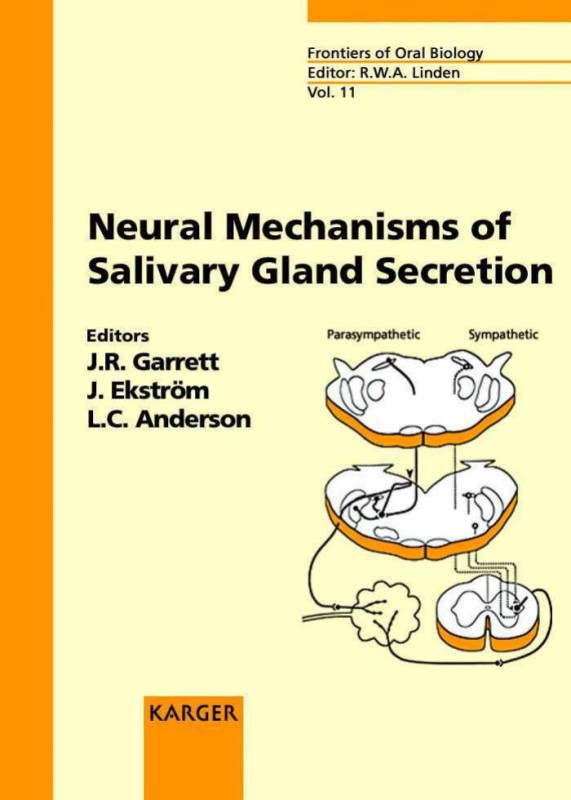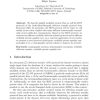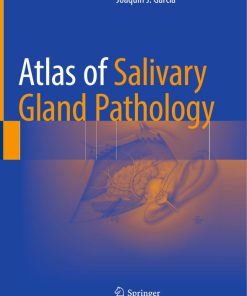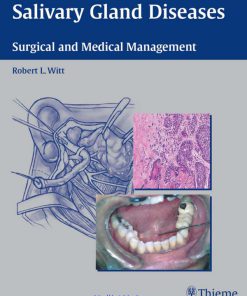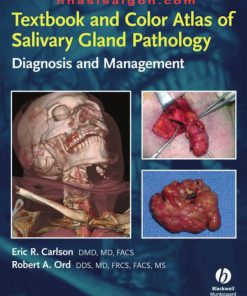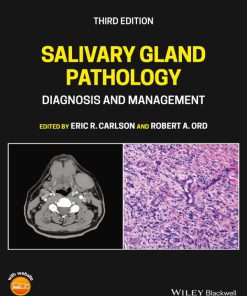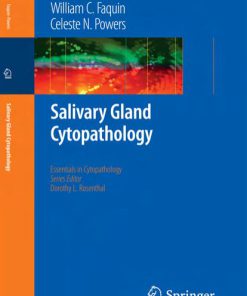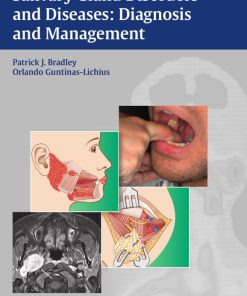Neural Mechanisms of Salivary Gland Secretion Glandular Mechanisms of Salivary Gland Secretion 1st Edition by JR Garrett, J Ekstrom, LC Anderson ISBN 3805568800 9783805568807
$50.00 Original price was: $50.00.$25.00Current price is: $25.00.
Authors:J. R. Garrett , Series:Physiology [70] , Tags:Physiology , Author sort:Garrett, J. R. , Ids:9783805569644 , Languages:Languages:eng , Published:Published:Jun 2000 , Publisher:S. Karger AG , Comments:Comments:Summary:”Saliva is essential for oral health and influences all events in the mouth. In 1850 Ludwig discovered that autonomic nerve impulses evoke salivary secretion and all work since has shown that the nerves normally control the flow and protein output of saliva. This publication, written by international experts, is the first one devoted to the neuroglandular mechanisms of this control.” “The book lays a sound platform of knowledge to all with an interest in and around the mouth including dentists, doctors, pharmacologists, biochemists and cell biologists as well as neurobiologists working on autonomic nerve activities.”–JacketShow less
Neural Mechanisms of Salivary Gland Secretion/Glandular Mechanisms of Salivary Gland Secretion 1st Edition by JR Garrett, J Ekstrom, LC Anderson – Ebook PDF Instant Download/Delivery. 3805568800, 9783805568807
Full download Neural Mechanisms of Salivary Gland Secretion/Glandular Mechanisms of Salivary Gland Secretion 1st Edition after payment

Product details:
ISBN 10: 3805568800
ISBN 13: 9783805568807
Author: JR Garrett, J Ekstrom, LC Anderson
Saliva is essential for oral health and influences all events in the mouth. In 1850 Ludwig discovered that autonomic nerve impulses evoke salivary secretion and all work since has shown that the nerves normally control the flow and protein output of saliva. This publication, written by international experts, is the first one devoted to the neuroglandular mechanisms of this control. The chapters contained deal with: the intimate details of the nerves and their different transmitters in the glands; central connections of the glandular nerves; receptors in the glands; nerve-induced glandular secretion of proteins; autonomic transmitters on salivary cells; the roles of non-conventional transmitters in the glands; the effects of denervations on the glands, on their capacity to synthesize and secrete proteins, and the development of supersensitivities to transmitter substances. Further chapters prescribe the inter-relationship between taste and saliva formation, and the reflexes involved in salivary secretion. The book lays a sound platform of knowledge to all with an interest in and around the mouth including dentists, pharmacologists, biochemists and cell biologists as well as neurobiologists working on autonomic nerve activities.
Neural Mechanisms of Salivary Gland Secretion/Glandular Mechanisms of Salivary Gland Secretion 1st Table of contents:
Chapter 1: Introduction to Salivary Gland Physiology
- Overview of Salivary Gland Function
- Importance of Saliva in Oral Health
- Anatomy and Types of Salivary Glands
- Basic Mechanisms of Salivary Secretion
Chapter 2: Neural Regulation of Salivary Secretion
- The Role of the Autonomic Nervous System
- Sympathetic vs. Parasympathetic Control of Salivation
- Neurotransmitters Involved in Salivary Secretion
- Neural Pathways and Reflex Mechanisms
Chapter 3: Molecular Mechanisms of Salivary Gland Secretion
- Ion Transport and Fluid Secretion in Salivary Glands
- Signal Transduction Pathways in Salivary Cells
- The Role of Calcium and Protein Kinases
- Regulation of Ion Channels and Pumps
Chapter 4: Glandular Mechanisms of Salivary Secretion
- Secretory Acini: Structure and Function
- Mechanisms of Protein and Enzyme Secretion
- Role of Myoepithelial Cells in Saliva Expulsion
- Modulation of Salivary Composition (e.g., electrolytes, enzymes)
Chapter 5: The Role of Salivary Glands in Digestion
- Enzymatic Contributions to the Digestion Process
- Interaction with Oral Microflora
- Role of Mucins in Lubrication and Protection
- Saliva’s Role in Taste and Sensory Perception
Chapter 6: Pathophysiology of Salivary Gland Dysfunction
- Disorders of Salivation: Xerostomia and Hyposalivation
- Causes of Salivary Gland Dysfunction
- Impact of Medications and Diseases on Salivation
- Treatment Options for Salivary Gland Dysfunction
Chapter 7: Clinical Applications of Salivary Gland Research
- Therapeutic Approaches to Stimulating Salivation
- Advances in Artificial Saliva and Saliva Substitutes
- Use of Salivary Glands in Drug Delivery Systems
- Saliva as a Diagnostic Tool (e.g., biomarkers for disease)
Chapter 8: Recent Advances in Salivary Gland Research
- Current Research on Neural Control Mechanisms
- Innovations in Glandular Secretion Studies
- Future Directions in Salivary Gland Physiology and Therapy
People also search for Neural Mechanisms of Salivary Gland Secretion/Glandular Mechanisms of Salivary Gland Secretion 1st:
neural mechanisms of salivary gland secretion/glandular
neural control of salivation and swallowing
neural regulation of salivary secretion
salivary secretion mechanism and neural regulation
mechanisms of salivary secretion
You may also like…
eBook PDF
Atlas of Salivary Gland Pathology 1st edition by JoaquÃn GarcÃa ISBN 3319090208 978-3319090207

